Sex in Cinema: Poetry vs. Pornography (Explicit Content)
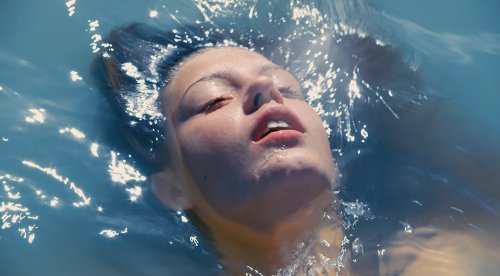
Sex is Suggestive, Art is Subjective
The debate about the purpose of sex in cinema is one of great depth and bias. The nature of art alone is a perplexing one, and one regarding the nature of eroticism (or pornography) present in art expands to the nature of sex itself and its roles in our lives whether evolutionary, social, spiritual, or other. It would seem that sex can play two kinds of personal roles within a narrative. It can either be didactic in its nature, and symbolic of the character’s psyche’s (that is, the role of the artistic), or it could be used simply for the appeal of watching it (the pornographic).
It is important to recognize that (usually in art films), everything you are seeing was written with some kind of narrative or emotional intention. Even if the sex is portrayed in an explicit and ostentatious way, the question must be asked: Why? This article will tackle how hollywood blockbusters and art house indie films (since they lay on either side of the spectrum of cinema) portray and use sex, and whether this should, in any case, be considered either simply pornographic, or perhaps more.
Appeal and Pornography
When discussing “pornography” in cinema, consider it the use of sex in cinema with the intent of either objectifying the character involved, or as the story just using sex as stimulation for the audience. This entails that the film uses sex between characters simply to get the audience to like the film, specifically because it is “hot” to watch, despite the fact that it contributes nothing to either character or story. When discussing “explicit” sex scenes, consider it the use of sex to the point were no ambiguity is needed, nothing is merely insinuated but shown beyond doubt or question.
Hollywood films such as Mission Impossible: Rogue Nation (2015), True Lies (1994), Battleship (2012), We’re The Millers (2013), and Spectre (2015), have their share of explicit scenes. And tend to be the same in one respect: the sex serves no purpose in regard to character development, revelation of character psyche, or didacticism of the narrative (except for True Lies, which I’ll discuss later). These kinds of movies are generally made with one purpose, to entertain, so that the executive producers can get their return investment from the box office. The people making these movies are going to cram as much product placement and appeal as they can in the roughly two hour span of stimulation they have for the crowd. It seems clear to the producers and studio executives that a decent number of people in the crowd like to see (most commonly) “hot”, half naked women featured in popular movies.

There was a clear example of this in the latest Mission Impossible movie. Isla Foust (Rebecca Ferguson), has multiple scenes in the movie in which she either shows a lot of skin, or the audience gets a close up of her ass as she exits a pool in a bikini. Another scene of this includes the actress aiming a rifle, and using her knee as a rest for her arm. At the time she is wearing a dress, and hikes her leg up to just about chest level, revealing most of her thigh in an already figure-accentuating dress. This is a prime use of sex simply for the appeal of it, to get the audience — quite literally — aroused. It’s void of character development, or symbolism toward the didacticism of the work; largely because Mission Impossible is not a didactic work. But this is no excuse.
The use of the male libido toward women is ever present throughout Mission Impossible, and this is a strong case of how sex is used in cinema to objectify and degrade female talent. For the audience, Isla is, on multiply occasions, used as a prop. The most significant impact her character has in the story is being a body for Ethan (Tom Cruise) to be attracted to. Throughout the story, while at times Isla is independent and strong, she is never fully capable of acting on these qualities. It is easy to say that her character is more of a tease for Ethan than anything else.
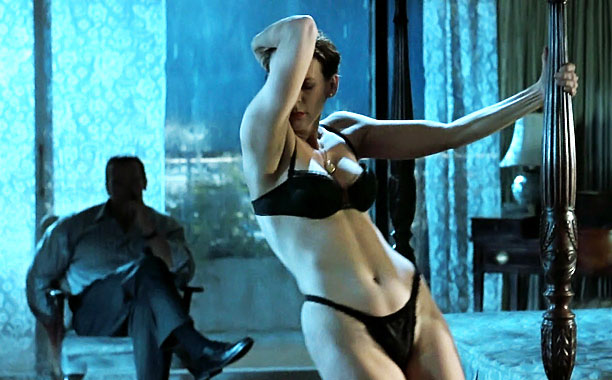
The infamous scene in True Lies, in which Helen (Jamie Lee Curtis), performs a strip-tease for Harry (Arnold Schwarzenegger), is another example of this. It is very explicit, and again, but unlike in Mission Impossible, did contribute to the character’s development. The wife in the film feels insignificant and almost a bit naive in her life — as though she’s done nothing worthwhile, nothing dangerous. Going undercover and dancing for a stranger was definitely a big step in her character arch. There is no question about the purpose of it in the film.
What makes this scene explicit is how it was shot. The underlying meaning of the character development soon falls short due to the very “in your face” way it was photographed. This the only attack you can really make toward the scene, but it think its a rail worth riding. The intent of the scene was to have Helen’s character fully break down her walls and do something a little vulgar, and be ok with it. This is a step in the right direction, but lacks creativity and poetic beauty in the face of writing and cinematography. The camera is used merely as ‘the un-blinking eye’ for our (the audience’s) gaze.

Now, Battleship had no explicit sex scenes, but it did use pointless sex appeal very grotesquely in the beginning of the movie. The scene involves Alex (Taylor Kitsch) laying on the beach with Sam (Brooklyn Decker), his girlfriend. Sam eventually straddles Alex (in short shorts and a bikini top), and the two kiss passionately for a brief moment. This may not seem very explicit, but there’s more going on here than just its actual content. During this scene, the viewer’s eyes are drawn only to the fact that the girl is bending over in ‘short-shorts’, and that her breasts are resting on the man’s chest, with her cleavage center screen. These are where our eyes are supposed to go. Yet another example of (1), using sex appeal not as a literary tool or metaphor, but just a thing that these two characters are doing together for our enjoyment (2), portraying the act itself in a very passionless, vulgar way (vulgar in regard to intention), and (3), objectifying a female character, who frankly, nothing but a mannequin in the story. Alex having to win the affection of his commanding officer (who just happens to be is girlfriend’s father) as a backdrop to an alien invasion, is pretty pathetic.
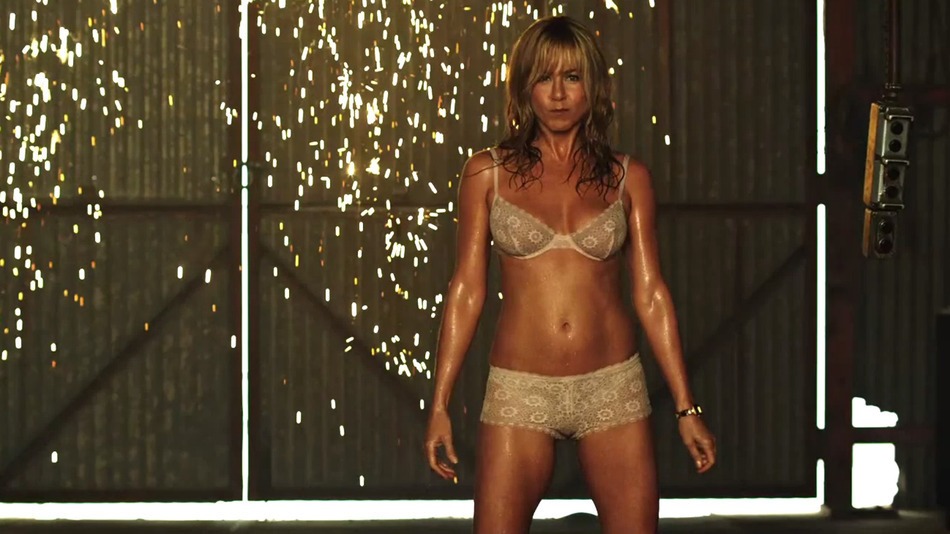
We’re The Millers had one of the most memorably bombastic scenes involving nudity of 2013. In the movie, the “family” gets in trouble with some cartel members, and Rose (Jennifer Aniston), has to prove that she is a stripper to get out of trouble by dancing the for the cartel members. Now, it’s difficult to take this seriously because of how obnoxiously it is portrayed (with the dramatic sparks and random shower in a warehouse), but it is still a very vulgar exploitation of Rose. While Rose is in fact a stripper, the only real purpose of the scene is to watch her dance around half naked for a while. It’s comedic absurdism doesn’t hide the fact that the scene was photographed and choreographed for sex appeal alone. It is more common in hollywood movies to see sex simply as an objectification of women because, unfortunately, that’s what a lot of people want to see.
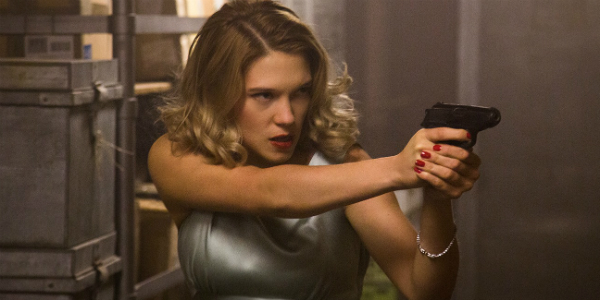
One of the most ambitious and exciting films of the year, Spectre, turned out to be disappointing to say the least. Lèa Seydoux (Blue Is The Warmest Color/Emma) stared in the film as Bond’s new love interest, Madeleine. Her character, like the female talent in the preceding films of this article, was kind of hollow. While she is fairly well educated in the film, and can fight pretty well, she was really just the new love interest for Bond, and not much of her own person. Her backstory is eroded as quickly as her character came on-screen, and the choices her character makes throughout the film are flat-out stupid. It would appear that Madeleine’s main goal in the film is simply to be the eye-candy for Bond to want to get out of the spy game. She really serves as a mindless character, so much so that it will make you question the writer’s choices and consistency throughout the story. Madeleine changes her mind as if she doesn’t have one. It makes the viewer wonder if her character’s only real purpose is to have sex with Bond whenever he is ready, and to do things around his choices. While there is only one sex scene that is not graphic or explicit, it is more prevalent that her character is so underdeveloped and displayed as compared to say, James Bond.
Symbolism and Eroticism
Some might say that, like intention and approach, sex has a purpose in art just like metaphors and diction have purpose in poetry. That artists recognize that sex is a huge part of life, and should be present in art as well. Blue Is The Warmest Color (2013) took the world by storm when it received the Palme d’Or at Cannes in 2013. This story of a young girl who embarks on a sexual odyssey of discovery and misery broke several boundaries of what cinema is capable of in its depiction of sex. The idea of passionate, or “beautifully” portrayed sex, really lies in the eye of the beholder. If the viewer considers sex in a generally vulgar or graphic way, it’s highly unlikely they’ll see a poeticism in the film. The one thing you can undeniably say about the portrayal of sex in the film is that it’s relevant to the characters, and that the importance of sex to the characters is just as important to the culture of the viewer; which is likely part of the criteria as to why it won the Palme d’Or.

Getting inside the mind of Adèle (Adèle Exarchopoulos), a scene plays out in which she touches herself and fantasizes about this mysterious girl with blue hair (Lèa Seydoux) who she saw on the street, and who she would eventually start a relationship with. The scene is somewhat surreal, at first the viewer is shocked because there is suddenly this stranger in Adèle’s room, but would soon realize that it was a fantasy. This is an example of how sex was used (in an intimate way), to convey character development (as Adèle begins to understand her own sexuality) and to reveal the character’s psyche. In regard to just “showing” sex for the appeal, one of the heaviest objections to Blue Is The Warmest Color, is that about two times in the film, we get a close up of Adèle’s butt while she sleeps. When looking at the themes and visual purpose of the story, it is not crazy to suspect that the director wanted the audience to fully understand the youthful development and naivety of the protagonist (the character was 18). Perhaps this relates to the way in which other people approached her, and how she interacted with other people.

The sex throughout the film is shot in a very beautiful, and intimate way; not only in terms of cinematography, but in the acts themselves. The director wanted the sex scenes to compliment the humanity of the characters. Both roles played by Seydoux and Exarchopoulos are acted to perfection, being some of the most “human” characters in film of the year. The scenes never use sex to demean or be-little the female characters as merely bodies or organs, but as human beings, full of passion and integrity. Each sex scene is shot with writer/director Abdellatif Kechiche’s attention to detail and picturesque glamorizing of the human body. A primary theme of Blue Is The Warmest Color, which, I think, made is so culturally significant, was the idea of sexual fluidity. The audience never knows exactly whether the protagonist is heterosexual, bisexual, homosexual, or other. Perhaps the film would say she’s none of these. The notion of sexual fluidity has become more popular as sexuality has become more ‘open’ and understood, and this is the core of what the characters of Blue Is The Warmest Color face throughout the narrative.
Controversially, actress Lèa Seydoux confessed that she felt like a “prostitute” after making the film due to the (at some points) six-hour takes it took on set to get the sex scenes right. And it seemed as though a large majority of real lesbians commented that the films sex scenes were not very realistic in their portrayal of lesbian sex. It is important to recognize that many real lesbians critiqued the film for depicting things like like “scissoring” — a sex act stereotypically common of the male perspective toward lesbian sex. These extended sex scenes do however rightfully portray how two women can be truly satisfied and happy together with no man. A big question to ask is whether or not the film objectified the actress. Many people speculate that while the film certainly did not exploit the actress, the director might have. This is a difficult accusation to weigh against the director, and the details of which would be strip to testimony between actress and crew — but is controversial nonetheless.
Lars Von Trier’s Nymphomaniac Vol. 1 & 2 (2013/2013) tackled sex from a very different perspective. Von Trier has been known for a few things as a filmmaker: (1) he is one of the most visually striking directors working today, (2) he is known to write terrific roles for women, and (3), he is not afraid to shoot sex on screen (as it is a theme in all of his films). The sex that is seen on screen (which actual porn actors were used to shoot) is not what some might call “intimate”, though it serves its artistic and didactic purpose all the same. In fact, one of the largest themes of the Nymphomaniac series was to portray sexuality from a female perspective, in all its intricacies and idiosyncrasies.
Throughout the nearly six hour epic (if you watch the director’s cut), it is a graphic telling of a self-proclaimed Nymphomaniac Joe (Charlotte Gainsbourg) as she tells her life story to Seligman (Stellan Skarsgård), a late-in-life virgin; the perfect person to hear Joe’s story, as he would not pollute it with his own bias and judgement based on his own sexual history. The story is highly controversial as Joe starts to describe her first sexual experiences as a small child, to her latest violent endeavors involving sadomasochism. Throughout the story, Von Trier incorporates all forms of art and relates them to sexual nature. At one point, the audience watches Joe participate in three separate sexual encounters as a teenager on-screen, while Seligman delivers a monologue of how a Cantus Firmus in music combines three separate voices of music to create one harmony.
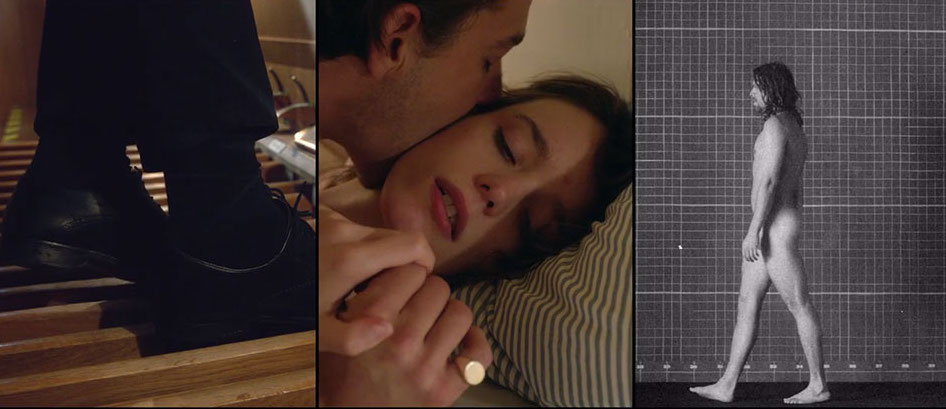
The audience does get a lot of close ups of Joe’s butt as a teenager, and usually sees everthing in the sex scenes, but this is not strictly pornographic. One of the largest themes in the movie (and what Joe comes to accept) is that sex, even in its most distant and non-personal side, is ok. Joe starts seeing a sex addiction therapy group to whom she eventually declares “I am a nymphomaniac and I love myself for being one, but above all, I love my cunt and my filthy, dirty lust.” The film gives perspective on everything from abortion, to the hypocrisy of man, to the nature of the “right” and “wrong” in sexual activity. The Nymphomaniac is undoubtedly both a controversial and liberating film.
Themes and Didacticism
Many films portray sex as a central theme of the work itself. Sexuality was a theme of every single movie Stanley Kubrick made whether it was The Shining, or 2001: A Space Odyssey. Films such as Under The Skin (2013), The Master (2012), Black Swan (2010), and Brokeback Mountain (2005) all center around sexual themes and motifs, and involve a decent amount of on-screen nudity/sex.

Under The Skin was an incredibly profound and perplexing work that was not meant to come off as explicit or used simply for the appeal. The story, and all sexual acts within it, have layers of depth and meaning. Scarlett Johansson plays a mysterious woman who takes lonely men to her strange “black room” and tempts them by taking her clothes off, temping her male prey until sink into the floor, where they remain in a gel-like space until they die. The story is about sexual discovery, lust, and the nature of beauty and its power over us. Johansson’s character soon comes to realize what truly lies under the skin and what the essence of her sexuality is. It is important to note that during the film, while we do see the men get fully naked in the presence of Johansson’s character, she never fully reveals herself. The only time Johansson is completely naked is when she is alone, looking at her self, trying to understand her own body. This idea is not a pornographic or exploitative one, but a extremely sincere one. The film portrays a war between human sexuality and humanity, which proves its didactic foundation elevates to something more than simply objectifying its talent.

The Master is one of the best cases to look at sex in film which is used as a literary and visual device to tell the story, and enhance character. At one point in the film, Peggy (Amy Adam) gives Dodd (Philip Seymour Hoffman) a hand-job in front of a bathroom mirror. This comes off to the audience as very strange and almost manipulative in context, but Peggy uses sex to control Dodd (her husband), and make him do what she wants (she literally demands what she wants while touching him). It’s also an unlikely co-incidence that her name ‘peggy’ is derivative of ‘pegging’ the sexual act in which a woman penetrates a man using a strap-on, thus furthering a literary motif of domination between these two characters. Freddy (Joaquin Phoenix), the film’s protagonist, is constantly with women throughout the film and almost has a child-like naivety which makes him vulgar at times. He sees women as only sexual objects. However, simply because the character is this way does not make the intention of the art that way as well. These ideas and characteristics are present throughout the film, which dominate Anderon’s (writer/director) underlying theme of man being a “filthy animal,” a very Nietzschean idea.
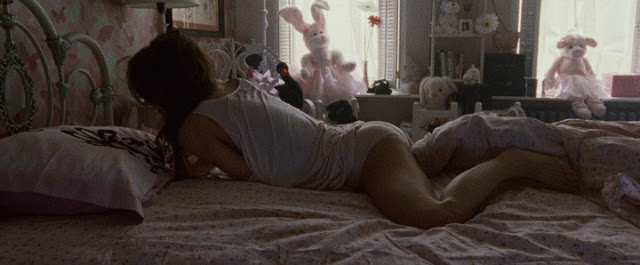
While it could be easily seen as purely graphic, Black Swan is an odyssey of self-discovery and awakening. There are many times in the film (whether it be fantasy or real) that Nina (Natalie Portman) starts exploring her very repressed sexuality. The image above shows the visual motif of Nina’s sexuality contrasted with her conservative childhood molding into her enlightened and adventurous adulthood. All the nudity and sex involved in Black Swan is extremely important when it comes to character development, as the film is a character study about sexuality. While watching a film like this, the audience may often wander “why do they have to show it?”, which is a valid question. The argument could be made that a film is a visual story — thus, in cases of the film being a psychosexual story, as it is here, then certain aspects of that story need to be seen. But there is also the argument of the extent of storytelling. Sex is a very touchy subject and many people are put off by seeing it in film, but if sex dominates the didacticism and ideas of the work, “why should it be excluded?”, is perhaps a better question.
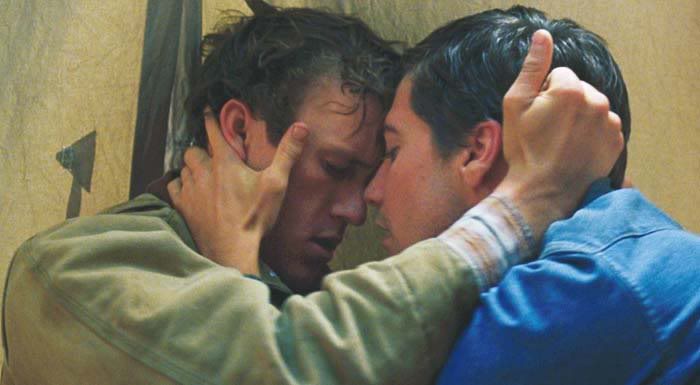
Brokeback Mountain is largely regarded as a groundbreaking “first great” LGBTQ film to go mainstream. While heavily controversial, Jake Gyllenhaal and Heath Ledger proudly and beautifully portray what was, in their character’s community, a doomed love. While there is only a small amount of sex and nudity in the film, it is highly important to both the relationships of the characters, and their own arch’s. The first sex scene between Jack (Gyllenhaal) and Ennis (Ledger) is very intense and passionate, while confusing at the same time; there is context in the act. At the beginning, both characters seem to be wanting to embrace, but also violently push each other away at the same time. They literally fight their urges while becoming comfortable enough to indulge in them, and eventually fall in love. It would not appear that these scenes are meant to come off as pornographic or vulgar, but passionate and meaningful. The purpose for this visual storytelling is to instill within the audience as much of a true sense of self-acceptance and understanding as possible.
Poetry and Avant-Garde
Certain films like To The Wonder (2012), Blue Valentine (2010), and Shame (2011), were highly dramatic, experimental, and erotic. Terrence Malick (To The Wonder), Derek Cianfrance (Blue Valentine), and Steve McQueen (Shame) all make visually stunning stories with emotionally charged character studies with either spiritual or social undertones. These emotions would lay a subtext for how the audience was meant perceive the story and its purpose.
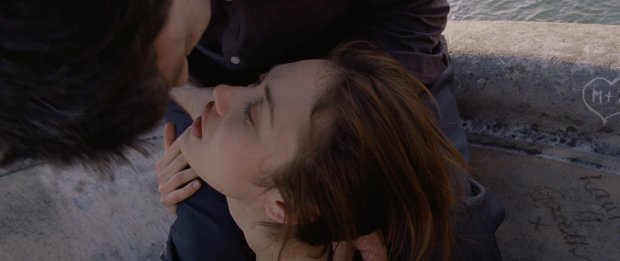
To The Wonder is Terrence Malick’s most breathtakingly shot romance film to date. It has been rumored that Malick chose to shoot the film while the script was still being written, and often would give the actors a couple pages worth of descriptions of emotions before tackling a scene. There is only one sex scene in the film but it is undoubtedly poetic in nature, just like the rest of the film. Like with other art films, it is not exploitative in the sense that one character is just serving as just a body to be looked at or groped — for the sex scene in the film is a spiritual experience between the two characters that relates back to the central theme of Malick’ philosophical tale of personal identity, loyalty, and meaning in the absurdity and suffering of existence. Perhaps Malick meant to compliment the beauty of human sexuality, and the wonder it entails when between two people who love each other.
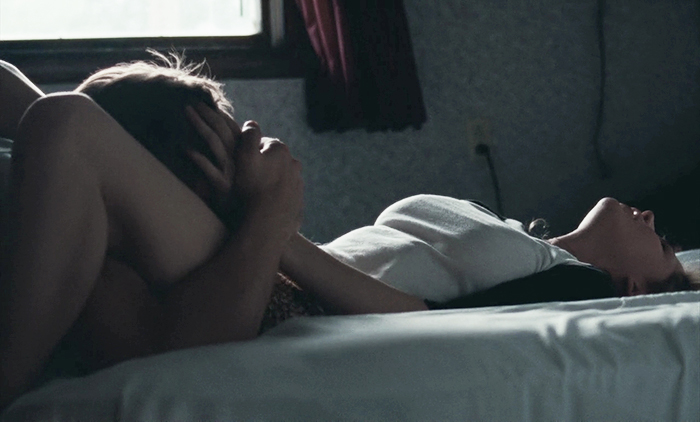
Blue Valentine told the depressing story of a marriage that has disintegrated over a period of several years. There is a lot of explicit material throughout the film but this, however, shouldn’t immediately label the film as pornographic or vulgar. All the sex in the film represents the condition of the marriage, and the roles of each partner in the relationship (not to mention the emotional turmoil between them because of it). The film was meant to portray the brutal reality that exists between a married couple, and sex is often a catalyst for many traumas and struggles within a relationship. The nature of sex in the narrative is a kind of nightmarish metamorphosis — that is, over time, the sex becomes monotonous and routine-like for the couple. At times it seems as though it is the only thing keeping the husband around (at least from the wife’s perspective). The wife eventually gets upset and aggravated after their sexual endeavors, especially when the husband ejaculates inside with — apparently against her wishing. In Cianofrance’s film, sex plays the role of a deep–rooted personification of the couple’s sense of decay.

Shame was a highly emotional and distressing film to watch. While melancholic in nature, the narrative follows a sex addict as he tries to navigate his not-so-cultivated life once his distant sister comes to stay with him for an unknown period of time. Reflecting on some awkward monologues between the two, it’s inferable that they used to be involved in some kind of incestuous relationship. Sissy (Carey Mulligan/Brandon’s sister) says over voicemail (to her brother) toward the end of the film: “we’re not bad people, we just come from a bad place.” They also seem very comfortable around each other (at least the sister does) as she lets her brother see her naked, wrestles with him in a towel, and doesn’t seem to care.
Brandon goes through a descent of his own in the film, and faces many personal obstacles. Often times the audience has no idea of their outcome. While the sex in the film is explicit, is it more of an in-depth look on the condition of our protagonist than it is as a means of objectifying any of the women or men he is with. We often times don’t see any actual intercourse, but when we do, we focus on the state of Brandon’s character and what the physical act means to him, rather than focusing on the act itself.
Prostitution In Film
Prostitution has been subject matter for masters of cinema such as Jean-Luc Godard, Robert Bresson, Pier Paolo Passolini, and many more. It would seem, due to many people’s view on prostitution in general, that stories and films about prostitution might be hollow of moral didacticism and meant solely for the indulgence of the profession or lifestyle. But perhaps this is a wrong turn in understanding art house cinema.
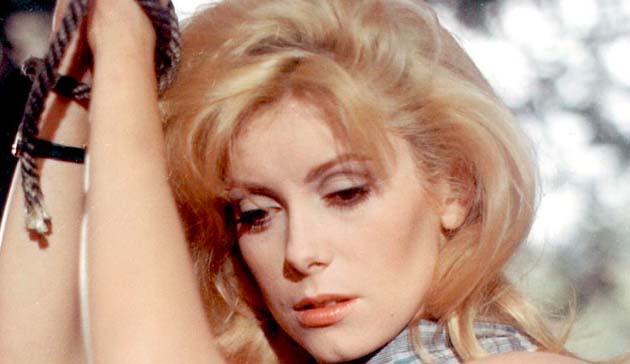
Famous surrealist spanish-mexican filmmaker Luis Buñuel is well known for his career defining work Belle De Jour (1967), about a lonely housewife’s turn to prostitution during her weekday afternoons. The story is not only a humanist approach to sexuality and desire, it longs toward a satirical attack perhaps on the elite lifestyle of the wealthy during the roaring twenties (when the book the film is based on was written), which turned out to be just as revelant in the late sixties when Buñuel adapted it to the screen along with Jean-Claude Carrière.
While the film contains many dream-like sequences that are as ambiguous as the film’s ending, it certainly contains extremely brute — and at times even frightening — portrayals of sexual tendency and desire. Despite personal opinions about prostitution, the film deserves respect for its brave look into the exploration and growth of a woman whose tired of laying down and taking it her whole life. No pun intended.
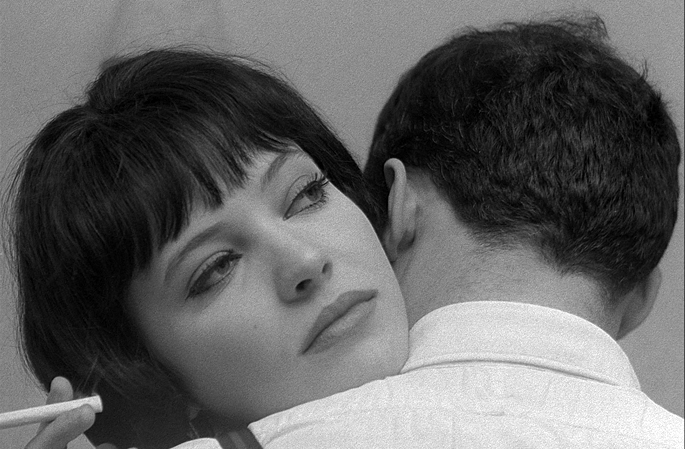
One of Jean-Luc Godard’s most notable works, Vivre Sa Vie (1962) treaded similar water as Belle De Jour. Vivre Sa Vie, however, is more a descent into the grotesque underworld and challenges surrounding the work and lifestyle of a prostitute. Godard’s portrayal of a woman who begins prostituting herself as a means of financial recourse due to her deferred dreams seems to pose a personal duality. While on one hand it was a liberation regarding the freedom of choice and how women treat their bodies and live their lives, on the other hand the film does highlight the brutality of that particular lifestyle, and it’s degrading nature to the spirit of our protagonist Nana (Anna Karina). There are many sequences in the film of Nana having philosophical ruminations with people about the nature of existence, the “self”, the purpose of language, and more importantly, human communication. Notably, we also watch how Nana’s existential views change throughout the film, all the way to one of the final chapters, in which she dialogues with a philosopher about language. Godard visually shows these ideas often through shots of characters in mirrors, through hallways, and under doorways; all making Vivre Sa Vie a classic art film and existentialist piece.
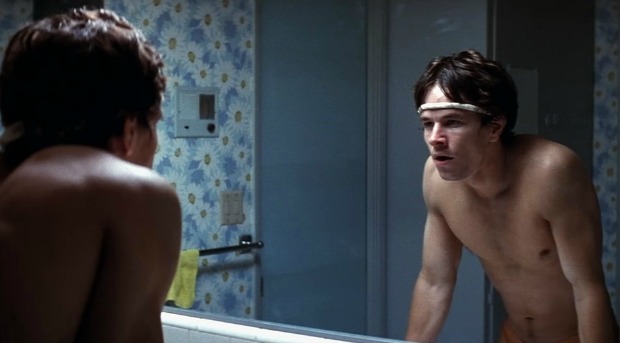
Arguably the greatest modern American indie film about prostitution, Paul Thomas Anderson’s Boogie Nights (1997) has gained quite a notoriety for itself from its obnoxious cinematography mimicking the high-wire style of the seventies, and its impressive writing from Anderson (it being his second feature). The film’s narrative follows Eddie (Mark Wahlberg), a young man who longs to find out what he’s good at, and who eventually adopts the porn star persona “Dirk Diggler.” The main character, through his fall due to egotism and anxiety, does eventually and briefly start to prostitute himself for financial recourse. Perhaps this was Anderson’s way of separating the stigma between prostitutes and porn actors (since the idea behind the film is that pornography has the capability of being something ‘artistic’). While literal narrative pornography was going on in the film (though the audience rarely sees anything), the audience’s attention is drawn to the naivety of Eddie, or the hollow aspirations of the pornographers looking to make something “real”. Either way, the highlights of the scenes were certainly not about the sex. The film is about deferred dreams, longing, struggle, and egotism, all centered around the blood-rushed rooms and parties of big porn producers, and what it’s like to be a kid surrounded by that.
Objectification and Exploitation
Maybe what separates the objectification of sex, and celebration of sex in cinema, is how it treats the talent involved. Like in Mission Impossible — the vulgar way the director looked at the character Isla really portrayed her as nothing more than an attractive nuance for Ethan. In the films like Under The Skin and Blue Is The Warmest Color however, the sex is never portrayed to belittle or degrade the characters. The sex in those kinds of films is used more so to exemplify and heighten the characters and their own development. An interesting film to look at is The Wolf of Wall Street (2013). Using the criterion and understanding described in this article, The Wolf of Wall Street is not exploitative, or objectifying. This, however, seems strange.

The Wolf of Wall Street is the pinnacle of the popular American film movement known as Cinema of Excess. The most defining feature of movement, that is the quality seen in all films of the movement, is that it portrays immoral behavior indifferently. Moreover, the film itself doesn’t scrutinize or moralize the behavior — its left for the audience to reflect on for itself. The reason that many movies mis-use sex and end up objectifying their talent, is not because of the portrayal of sex alone, but because of it’s depiction and masquerade of exploitation. The Wolf of Wall Street is about lust — of a sexual, and postcolonial kind. The film depicts the realistic (and disgusting) way that powerful people treat others. At one point Jordan (Leonardo DiCaprio) even comments — in a very degrading way — on Naomi (Margot Robbie) while she is displayed rolling around in lingerie; but this is not same case of exploitation as say, in Mission Impossible. The Wolf of Wall Street does not parade around the exploitation of the people like hollywood films often do, it highlights it, because that’s what the film is actually about. It depicts things as they were: rude, vulgar, dirty, and inappropriate; it doesn’t try to play them off as something cool in the movie for your individual enjoyment.
It seems as though it’s rarely the case that men are sexually objectified in cinema. Granted, it is a rarity that films dissect the sexuality of men at all, but that doesn’t change the fact that hollywood knows what sells to the masses. Women are easily victims of exploitation because to a lot of people they are still seen as merely sexual objects, nothing more. Sex being used to objectify or exploit them also relates to the context of the sex itself: How is it being used, and for what purpose? These are questions that should define the work of an artist and their intention of storytelling.
What Does Sex Mean?

Sex has a role in art the same way it has a role in life. Oscar Wilde once said “everything in the world is about sex, except sex.” This can be a practical application of meaning when dissecting many art films. It has also been said that poetry is either about sex or death, so when talking about poetic and artistic cinema, sex likely has an important role.
Perhaps sexuality is not something that can be strictly understood in itself, hitherto applied to something else; characters, context, or meta-poetic narrative motifs. There is undoubtably a role for sex in both didactic and nihilistic art, the trick of it seems to be its application and intention. It’s difficult to try and draw lines in something as abstract and subjective as art, but sex rides a very thin one. There is a pattern of things that can separate sex from being artistic or merely appealing in cinema: the intention of it, the depiction thereof, and whether or not the talent are simply being objectified in the production or whether the actors and creative minds behind the film are trying to make a more profound statement on sexuality and the human condition through art.
What do you think? Leave a comment.











Boogie Nights is my favorite movie by PTA.
Making a nude Heather Graham seem gross is an achievement. Julianne Moore not so much.
I hear some individuals state that “sex is natural” and “we shouldn’t be ashamed.” Filicide, Coprophagia, Incest, and Cannibalism span across many various species in nature. So, I guess violence is natural as well and we shouldn’t be ashamed. That doesn’t mean I want to see it on the screen.
I would say it depends upon the story. It’s hard to convey the horror of D-Day without violence. It’s hard to depict the depravity of Rome without nudity. Having said that, age limits, etc. in society are completely arbitrary. You can’t drink until 21. But, you can vote, go to war, and trade stocks by the age of 18 in the U.S. There is a lot of moaning about the MPAA. There are certain cases that I feel they’ve been wrong. But, generally speaking, they’ve done a decent job.
I hate nights like tonight. Here I was, about to go to sleep and then I check The Artifice and read an interesting article like this.
Sex should NOT be in movies. It’s not godly. Why should a director make me sin (and the KIDDOS too!!!)? God will kill directors who put sex in movies and they will burn in hell with Satan. It’s ALL pornography and is therefore a sin. Go to God luminous gloom and pray for forgiveness. And delete this satanist propaganda.
Tyson, the Bible has sex in it. Song of Solomon is one of the oldest and best examples of erotica. God made sex to be a beautiful thing; it’s human beings that corrupt it with their minds. Thus, you can see sex in a film and not sin. You do not have to lust. Sex and nudity even can be portrayed in ways to never incite erotic feeling. Observe Fernand Léger’s ‘Le Grand Déjeuner’. Is that porn?
Also, putting sex in a movie will not make you burn in hell. That’s not how sin and salvation work, biblically. We are not saved or damned by our works; only our belief in Christ. But that’s a different issue to the topic at hand, so I’l leave it at that.
Okay you have no clue what you’re talking about. I’m an ordained priest and I can see that Satan has already taken you away to rot in his cells in hell. “Sex” if we can call it that and not rape (which is what it really is) is a horrible thing and should not be permitted outside of marriage. Song of Songs is about marrying someone and then receiving the holy benefits of sex. But even thinking of it outside of marriage is a sin as Jesus says it’s adultery of the heart. Please get a life you loser. You need to stop sinning and go to God before you end up dying from your vile evil.
I’m a born again Christian, Tyson. I see little chance of you being a priest, however, if you are calling one of your brethren a ‘loser’. You have made a terrible witness in this comment section.
Thinking about or noticing sex outside of marriage is not of sin; else, the word ‘prostitute’ in the bible would cause us to sin. Lusting after a woman outside of marriage, for sex, however, is. The battle is for the mind. We do not place ‘sin’ in the existence of something outside of us. Christ was tempted in every way known to man, and he succeeded. We can too; the strong Christian can be in incredible proximity to sexual immorality and pull through. How else do Christians provide guidance and the gospel to people in the prostitution industry?
And again, did you look at Fernand Léger’s ‘Le Grand Déjeuner’? Can you tell that they’re naked? Yes. Can you lust after them? I don’t think so.
If it’s okay to put links here, I think it’s worth adding that I’ve encountered, fought with and paid penalties from sexual media as a Christian; I once wrote about it at length here: https://unnecessaryexclamationmark.wordpress.com/2015/07/08/christianime-taking-every-ecchi-thought-captive/. What I learnt the most is that as much as I try to avoid sexual media, it’ll come looking for me. The enemy want sto pick a fight. Fleeing from sexual immorality, first, means fleeing to God, and we flee to him in our hearts and minds. If we do that when we are hit by sexual immorality in what we watch, we can stop ourselves from committing it ourselves, defuse the temptation and perhaps even find that we were deceived, and that this isn’t actually sexual immorality in the first place; it was just our temptations making it appear so.
Attitudes to sex in media like yours are why there are /more/ Christians committing sexually immoral acts; they try to blind themselves to the enemy rather than put on the full armour of God and fight him, and win.
Wow, brother it’s good to see you’re fighting the good fight. I will pray for you and you can keep watching the rape of Christians on your movies. Good luck brother. And may God bless your deceived soul.
I can’t tell if this is sarcasm. On the off chance it isn’t, I must ask: does threatening people’s damnation normally work for you? This is an open forum for open discussion. People will have different opinions as a result of different experiences and upbringings. Sex is an important topic because it is a part of the human condition. There is no value in censoring what people can talk maturely about in a productive, insightful way. Please do not stifle the intellectual community with a single point of view. That is not what this website is for. Thank you.
Tyson, directors are not MAKING you sin. If you don’t want to see sexual content in a film, don’t watch it. Ratings and the reasons that movies are rated so are pretty widely advertised, so it isn’t difficult to find out what kind of graphic content is going to be in a film. Just because sex is tempting to you does not mean that it is wrong.
You need to go to God. I can already see Satan has you in his claws. You CAN’T read rating about SEX because it’s a sin too. Duh. That’s so obvious. Thinking of sex outside of marriage is a sin like Jesus said. Please, I will pray for you but you must go directly to Jesus himself and ask for forgiveness for your evil words.
I feel pretty confidently that Tyson’s trolling you, kids. Don’t let it keep you up at night.
An incredible article, well-research and wide-reaching, in order to leave no sexual cinematic stone unturned. The introduction was particularly effective, as it very quickly and convincing encouraged a debate on ‘sex’ and ‘art’ and the cohesion of the two without immediately forcing a voice or opinion into the topic.
Thanks for taking all the time to put this together.
Wow. You support rape too. That’s horrible. Please go to Jesus.
This was an incredibly interesting article, and I think its an incredibly important distinction. So many people dismiss sex on film as smut (I catch myself doing it during some movies), when it can sometimes actually be incredibly meaningful and important to the characters and story. Thank you so much for writing this!
This article was fantastic, and included a wonderfully broad range of movies as to be able to draw in any movie watcher. I agree with you on virtually all points, and do think that sex has multiple purposes in film. I also think that Blue is the Warmest Color is an excellent example of how sex can be used in an artistic manner to represent massive protagonist character development. My only recommendation is to watch the typos, those got a little distracting. Excellent content!
Sex in film only sends you to hell. Please get your facts straight and pray.
I’ll never watch Shame again.
I’m going to reference this in my essay in film school. Thank you.
Happiness.
Lars von Trier’s work. He is a huge contributor to unsimulated sex scenes in cinema.
I think the film that had most impact was Antichrist. The explicitness of the first scene hits you right between the eyes and because it’s intercut with something very tragic the nature of the explicitness becomes something else. The emotional sense becomes very conficting and reduces the eroticism to another level. If the sex scene had been just by itself then it would have been just that, another sex scene.
It showed some morally disgusting side of things and very real too. Basically, who cares about the kid, let’s fuck. I know about certain couples already with kids in the house, being immature and still caring only about themselves, sometimes with tragic repercussions. If it’s not the ultimate form of irresponsibility, I don’t know what else. Nature as always only wants to please itself, no higher concept behind it.
I think the big question is, how is it all changing us?
Really great work on this article! I do have a gripe though with the example of Isla Foust in Mission: Impossible – Rogue Nation. The scene you describe in which she ‘sexually’ exits the pool is, I believe, an unfair representation. I think what you’re actually referring to is the marketing for the film, where we very clearly get a close up shot of Rebecca Ferguson’s ass in the trailers. In the actual film, however, all we see is a wide shot as she gets out of the pool. Nothing about the scene in question appears to be intentionally sexual at all. The fact that Ferguson’s character is “showing skin” is irrelevant, since the scene requires her to be in a swim suit. I think most people would agree that simply wearing a bikini isn’t sexual in nature. (Is going to the beach then like visiting a pornographic set?)
Speaking of which, the act of of having skin revealed in a movie shouldn’t be thought as objectifying. Would we not agree Tom Cruise shows an equal amount of skin in the film? You also said her presence in the film was to be Cruise’s “body to be attracted to.” If you were familiar with the films you’d know the character of Ethan Hunt is married. The film clearly goes out of its way to actually play down the supposed sexual tension between Hunt and Foust. They never even kiss, but rather maintain a professional relationship with each other, and hug as friends at the end of the movie.
Overall I think the article is excellent, but just be careful about the examples you use. Don’t be so quick to write off the Mission: Impossible films as not didactic. Rogue Nation was one of the highest rated films of the year by film critics.
I would’ve liked to see more of an awareness between porn sex verses “real sex” for example how women are objectified towards the last two Transformers compared to sex being apart of the character development that makes sense in the story like The Notebook. Or for example take movies like Paraphiliac or Nymphomaniac being sexual disorders. Movies have been made about them but was it just an excuse to use as porn?
Great overview of sex in cinema.
I’m fine with penetration being an arbitrary dividing line between porn and cinema/soft core. I don’t know how seeing the physical act exhibited graphically is necessary for advancing a story, but I’m open minded enough to consider a thoughtful explanation. I heard about some Euro porno guy performed a scene in a French art house film with very little doubt that penetration occurred. I don’t know if it was ever released in US theaters.
That was Rocco Siffredi in Breillat’s “Romance”.
How could you forget William Shatner’s nude scene in Big Bad Mama ?
This is a good article, definitely faces questions I think many hold.
This really resonated with me as someone who is an advocate for more accurate gender representations in media. I also really enjoyed how you took us through the scenes not only from the character, actor, and audience perspectives, but from the actual perspective of the lens/shot.
I think what’s really important for people to learn is that the movie who is born solely to make money is a very different animal than a film. A lot of movies try to pretend that society is being reflected in the plot–that they are making what the people want. That’s not always the case. Sometimes the bombardment of stimulation is simply too much.
Your closing sentence is spot on. It’s a very hard line to distinguish. With so many complex constructs and so many constants to try, it’s difficult to discern what is being defined.
I think that our culture’s weird relationship with sex- it is salaciously everywhere, yet no one HONESTLY talks about it- is represented in our films. We don’t necessarily need MORE sex in films, but we need better sex. We need to see more female pleasure, which is rated more harshly than male pleasure by the MPAA.
Tomiko’s comment is spot on. The varied and – ultimately – strange sex we often see is a testimony to our culture’s uncomfortable relationship with sex. Are we okay with it? Are we disgusted by it? Is it okay in small doses? The author chose great films, but I think it would also be interesting to expand on this and focus on specifically on the differences between films that seem to be made for a male gaze and those which focus more on female pleasure. What are the distinct differences we see? It also might be interesting to focus solely on one time period. It’s somewhat hard to follow the large selection of movies, and the article’s points could be better followed if there were a more specific focus. All in all, a very interesting read and a noble topic to write about! We need more discussion on this subject.
This article was extremely interesting. I felt like I was reading an argumentative essay complete with thesis and supportive evidence and it was not in the least bit boring. The look inside Hollywood’s exploitative nature is fascinating. Also, this article completely changed the way I view The Wolf of Wall Street, so thank you for that.
There is definitely an imbalance between violence and sex taboos in our film culture. Growing up, most of my peers and I were allowed to watch all sorts of violent films, but anything with a hint of nudity? No way. That bothers me.
Thought provoking interpretation of how sex is portrayed in cinema.
I wonder what your take is on hollywood blockbusters such as Magic Mike and Don Jon, where men are the focus of sexual representation.
This is a very wide-ranging and fascinating look into a subject that is not often discussed in this way. I think that the examination of nudity/sex as objectification vs. being pertinent to the story and characters is really well done. Our culture often conflates movies’ portrayals of sexualized women with certain films dissecting and challenging those conventions. Artful and meaningful use of sexuality can be as profound in film and television as in literature.
Very engaging article. I’ve been waiting to read something that describes sex in cinema as something more than just smut or a product for male-gaze. The examples you bring up and how you’ve explained them give a good look into how we can analyze different films and really see these scenes for what they’re meant to be.
I really appreciate the balance of respect/open-mindedness versus skepticism/criticism you broached this topic with; it’s something that not many people have when entering this argument – from either side – and really adds substance to the conversation.
Interesting how societies values have changed from subtle in the first Thomas Crown affair and suggestive over the chess board to full on nudity in the remake.
The article reads like English is its author’s second language. He or she could have at least ran it through spellcheck and have seen that ” porstitute” is not a word.
Very interesting.
I feel like there is ways to go about having sex in movies instead of having it in just about every movie, its ok to show a skin here and there but not always.
Blue is the Warmest colour tugs at the heart strings. The sex scenes were so intense – running high with emotion – that they were almost a dialogue.
Blue is the Warmest colour tugs at the heart strings. The sex scenes were part of the dialogue.
This was a real epic! Wow, this was extremely well written.
I think sex sells honestly and that’s why it’s in films as much as people wanna say it’s art most of the time it isn’t to be honest if directors didn’t want to put sex scenes in their movies they wouldn’t have to but hey some movies are great and others are not but hey honestly to each is own
Great article and very informative!
Felipe M.
It is refreshing to see this movement of highlighting the subjective and poetic nature of sex alongside the arousing and pornographic. In an age where people have easy access to pornographic sexual stimuli it is important now, more than ever, that sex isn’t exclusively encapsulated by pornographic definitions. By breaking down the different ways that sex functions in film justifies is and gives it the raw complexity it deserves. Well done.
Sex scenes that fit the plot and are realistic can contribute immensely to the art of a film. I will always get aggravated when characters are needlessly sexualized for the sake of viewership (especially women, who are often the victims of this), which is unfortunately still the norm. But changing the question from “Why should it be there?” to “Why should it be excluded?” could lead to some interesting discussion.
Great analysis on the tropes of the film industry. I have had similar annoyances with Hollywood and sexuality in film that have no purpose in being there, particularly instances that you have mentioned in ‘Mission Impossible’. When introducing a female character in an action movie, why do they always have to be coming out of some body of water in a bikini? Why every time? Does she just like swimming? Will she mention that later on? Is there just an endless pit of female spies that live underwater, and one just magically appear whenever James Bond/Ethan Hunt/Male Spy Character shows up? It really drags out the movie and deprives it of authenticity.
Incredibly intelligent and thoughtful. This article really made me look at sex differently within film and even beyond as well.
Thank you.
The Wolf of Wall Street was intentionally objectifying women as sex objects because Scorcese’s point is that love of money objectives people. When Naomi Belfort stands in shoes and stockings only seducing Jordan Belfort from a doorway, it is a comment on here-today-gone-tomorrow Playboy magazine fantasy. Everybody’s using everybody, but it won’t last long. Regarding sex, it is airbrushed Boogie Nights and, as a result, not pornographic, but cautionary.
Scorsese’s point has some merit.
Great arguments and structure for your article! I think you brought some great perspectives and analysis that can be applicable across many more films than just the ones you chose here, but the ones you chose really made your point well!
Beautiful and diverse article! People so often tend to be uncomfortable while watching sex scenes, which makes sense if they aren’t comfortable in their sexuality because it is making them feel something that they don’t quite understand and aren’t use to, but this is only masking them from their true nature. Humans are creatures of the earth, we’re animals. We aren’t these perfect, chaste things that simply fuel off of happiness and butterflies and rainbows. We have our visceral instincts that are the foundation of our beings– food, sex, passion. I’m not a Christian and I don’t know much about the bible but why in the name of St.Joseph would God make sex feel so euphoric if it was such an evil thing. To attract us to the process of procreation? Perhaps, but why would that euphoria continue even while we’re infertile?
I love the wide range of your commentary of sexual images in film and i agree with all of it. Some films merely consist of sexual images in a basic level, to sell tickets and attract people but in many others sex is used to advance the narrative in some way or to better represent the characters by something so fundamental to their nature. The Wolf of Wall Street is vulgar and debasing on purpose. Through filthy and superfluous sex imagery Scorsese depicted the greed and vanity of stock brokers of that time.
That Oscar Wilde quote that an additional ending that you hadn’t included that I find to be the most powerful part of his message: “Everything in the world is about sex except sex. Sex is about power.” Sex is one of the main feelings that drive us and it gives us power. It gives us a power that some us feel we lack in our daily lives and have to compensate, but power nonetheless. We all want to feel large. We all need to build our egos at least a little in order to preserve our sanity and for many of us we find power in sex.
This is such a thorough and NECESSARY article. It succeeds in putting into words the concepts that so many of us stumble over in an effort to assimilate the value of sex as a plot device (or visual stimulation). Thank you for writing this article. It is very thoughtful.
I identify as asexual, but sex in cinema has always been a fascinating topic to me. In particular the rise of female oral sex in films is so complex. It’s also so strange to me that something so natural is such a polarizing thing to see on screen.
Sex in Hollywood movie= fan service in anime
Two of my biggest interests in cinema are its portrayals of sex and violence. This was a really interesting exploration of sex. I love the extensive movie references. PTA is really a legend — The Master and Boogie Nights are both brilliant films. (P.S. Let me add my voice to the chorus of those who think Blue Is The Warmest Colour is an exploitative mess… it is.)
They’re not movies but while reading this I immediately thought of two show that I think superbly used sex as a means of art or narrative progression rather than simple titillation. Diary of a Call Girl used sex to show how Hannah views her job and the show actually had an episodic nature wherein Hannah attempts to find the best way to fulfill her client’s needs. The sex is very present but it’s secondary to the mental connection she builds with clients and also the walls Hannah builds between her personal and professional life.
And in Netflix’s Sense8 there are minutes long orgy scene but they’re used to demonstrate the telepathic connection of the main characters and also introduce the concept of fluid sexuality.
Loved the breadth of films covered, presents a solid comparison of the representation of sexuality and how it does or doesn’t construct the characters of a film.
Based on all this, I’d say there’s two big forces in shaping how sex in film can succeed and that’s 1) does it contribute to character development in some way and 2) how is that development represented on screen. This requires the strength of a great writer, the talents and understanding of a great performer and the delicacy of a great director.
Hello!
How are you? Recently I have seen a so extraordinary excellent film, namely blue is the warmest color! A so superb film that has been inspired from a novel with this name by Madam Julie Maroh!
This film is one of the best films and series that I have watched in my lifetime. I feel euphoric from watching this so attractive and romantic film with a lot of aesthetic sides and scenes and dialogs. I will be eager to comment my viewpoint on this so beautiful film voluntarily.
This so adorable film protagonist is 2 so lovely girls, Adel Exarchopoulos (Adel) and Lea Seydoux(Emma)! I frankly assert that these two superstars shined in this series with the best possible form.
Adel is a passionate teen and Emma is a young modern girl (in this film).Emma is near 30.but Adel is less than 20.adel is belonged to a conservative French middle class family. But Emma is belonged to a high class intelligentsia and freethinker and liberal family. When they grown up, Adel became a kindergarten teacher and Emma became a modern painter. Of course, it seems that the film protagonist is Adel more than Emma. Before of Adel accidental friendship with Emma, she had a romantic relationship and sexual intercourse with her high school male classmate tommas.but their love affair spans were so short and temporarily. Adele had other sexual intercourse with her kindergarten male colleague afterward too. But in this so good film, we watched that the mentioned relationship weren’t amorous and deep. Of course, Adel had a sexual tendency to one of her female classmates in her high school times too. But the mentioned tendency was superficial and short. Instead, when Adel met face to face with Emma in street and gay and lesbian clubs,…accidently, her sentiment genre to Emma was so more different in comparison with her other boy friend and girl friend.
In my viewpoint, Adel had a so virgin and pure amorously and passionate beautiful and lustful and deep sentiments to Emma. But Emma lesbian-kind lusts to Adel followed from her society interelgensia and high ranking freethinker life style and mode. As a matter of fact, Adel was a passionate and so lovely girl. But Emma imitated from her society intellectual norms and life styles mechanically.becuse Emma family were more liberal and broadminded and freethinker in comparison with Adel family. That is why Adel hided her sexuality orientation to her same gender in front of her conservative family members and classmates. But Emma intellectual freethinker family members welcomed her lesbian kind tendencies. Unfortunately, Emma looked at everything even love so important matter as a mechanical and natural and scientific and hedonic one. But Adel was so passionate and romantic girl inwardly. That is why in middle and end of film their lovemaking and romantic relationship end was so stressful and heartrending for Adel and I as a film so eager watcher. And instead, it didn’t affect on Emma morale a lot. But Adel was broken down inwardly. I personally love Adel personality in comparison with Emma one.
Meantime, I don’t satisfy from this so interesting film ambiguous and perplexing and sorrowful and tragic end at all. Of course a farsighted viewer was noticed that since Emma changed her head hair color (blue) to its natural form, she changed her sexual,…tendency to Adel too.
Although Emma discomfort with Adel was cleared when Adel had a sexual intercourse with her kindergarten male teacher coworker apparently. It seems as if Emma were Adel husband role.
Please notice that girls with blue hairs symbolized lesbians too! It seems as if I expected the film so attractive adventures must be continued. That is why. In my past email, I requested you that you sent this film episode of 2 and 3,…for me.becuse this so admirable film end blew out my brains a lot. Even I am dizzy yet too. I expected Mr Abdellatif Kechiche; this so interesting film director showed his spectators on this so important matter that what happened for Adel finally? So I think that this film needs to continue by all means.
I wish these two couple lovers married each other finally. Or they had permanent concubine kind living and romantic sexual intercourse each other. Their tragic and bitter separation in the middle parts and end of film shocked and saddened and infuriated and grieved me inwardly a lot. Of course Emma ended her romantic relationship with Adel. But as before Adel praised Emma inwardly as her lover a lot. That is why I felt sorry and doleful and woeful from my bottom of heart.
In any case, the blue is the warmest color film, is one of the best films and series that I have watched hitertto.and I extremely acclaim this so praiseworthy film theme, superstars shine (especially Adel and Emma as protagonist, respectively), director skills, aesthetic sides,…! And I want to watch this superb film again and again as much as I can in my longevity as well.becuse I love this film from every angle so much, of course except of its blue end.
I wish these kinds of so interesting and beautiful films and series will be produced increasingly afterward. I wish so long series with these kinds of theme will be showed afterward a lot as well.
By the way, can you give me my dearest madam Adel Exarchopoulos(Adel) and Lea Seydoux(Emma)and my dearest Adel high school classmates addresses, phone number, email address ,…to me ?I wish I could become their permanent sincere friends and lover!
I wish I could meet them in France, Belgium,… in my lifetime a lot!
I wish I could marry or I could romantic relationship with my dearest Adel, Emma,…and or the girls with their similar life style, appearance, age,…a lot!
Especially, when I watched this so admirable film, I was fallen in love my dearest Adel with her so passionate and lust-kind and beautiful and fresh and pure and natural appearance and modern life style a lot. As a matter of fact, I love junior secondary school pupils with my dearest Adel, Emma,…similar life style, appearance,…pivots so much! Although I personally prefer Adel in comparison with Emma, whether for her so warmer passionate kind sentiment or her smaller age and her more beautiful appearance sides! I miss them from far distance so much! I expect you send my note to them as soon as possible. It may your mediatory role can cause my permanent so romantic relationship with them as well. I love these groups of girls from life style, beauty sides,…so much.espacially if they be adolescent girls too, it will be light upon light as well!
I hope you add your comments and standpoints on my views and offers to me as soon as possible too.
I wish I could receive a letter of invitation from my dearest Adel and Emma from their homeland right now. As soon as I receive their letter of invitation from their homeland, I will close my suitcases and I will be set off France, Belgium,…Eagerly.
By the way, where come from these so lovely actresses? And which countries they live now? Because I have heard this so praiseworthy film is 3 European countries joint production (France, Belgium,…)!I guess they live in France.
Finally, I kiss and smack and bear hug my dearest Adel and Emma and other females actresses that stared in this so brilliant and admirable film (especially Adel high school female classmates) from far distance so much!
I wish my society had similar France,…life styles,…from this angle once! That is why I sorrow inwardly a lot as before too.
I wish I could live in these environments and climates and societies and I experienced these so sweet and paradisiacal love adventures in my longevity a lot.
In finally I wait for your instanter feedback and answer to me impatiently. I wish my dearest Adel and her teens co-stars sent a letter of invitation from their homeland to me right now. And I wish we could become sincere friends everlasting!
I have no more to say currently.
Thankfully
Kaveh yousefzadeh
2017-09-25
Revised version:
2017-09-26